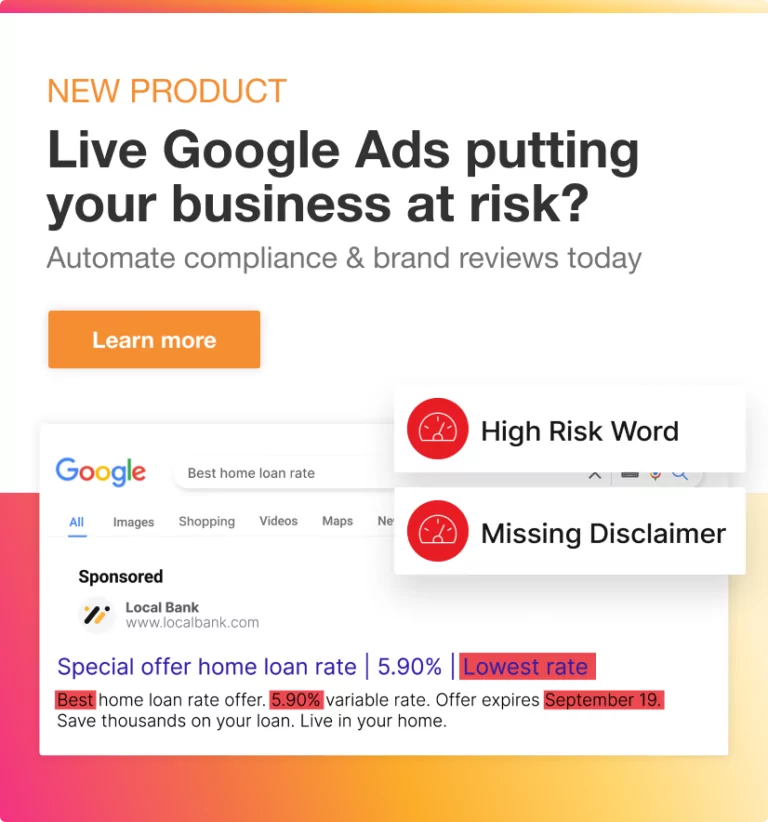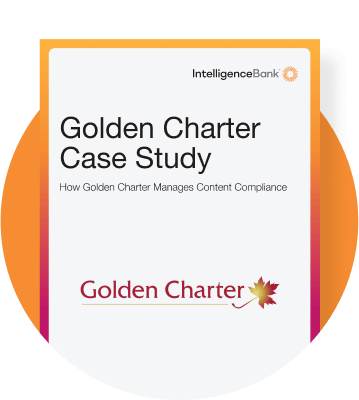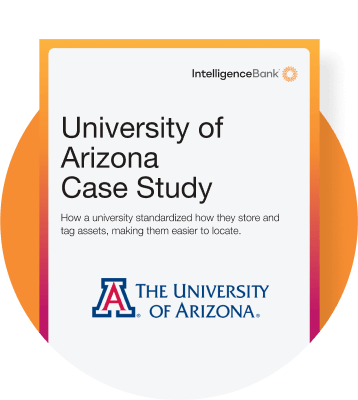Finish this sentence…
“My knowledge of Digital Asset Management systems is ___%”.
Sub 70%? You’ve scored a borderline C and will definitely benefit from reading our comprehensive guide to all things Digital Asset Management. You’ll learn about the vital role Digital Asset Management plays in streamlining marketing workflows, enhancing collaboration and ensuring brand consistency.
Let’s start by walking you through the fundamental concepts of Digital Asset Management then explore its benefits, features, implementation, and best practices.
What is Digital Asset Management (DAM)?
Digital Asset Management (DAM) is the process of organizing, storing, and distributing digital creative assets in a centralized and efficient manner. Digital assets include a wide range of file types such as images, videos, audio files, documents, presentations, and more.
DAM systems provide businesses with a platform to manage these assets throughout their lifecycle, from creation to distribution and archiving. They make it easy for marketers to store, organize, search, retrieve, and share assets, ensuring seamless collaboration, brand consistency, and efficient workflows.
While there are other online file sharing systems out there, a DAM is the only software specifically designed to manage digital creative assets and their surrounding workflow. SharePoint for instance, is great for sharing documentation internally, and Dropbox is terrific at sharing synched files, but both lack the granularity of management offered by a DAM. A DAM is also different to a Document Management System (DMS) which is for more text based documents.
What are the benefits of a DAM system?
‘Control’ is the first word that comes to mind. ‘Power’ is another, although it sounds villainous. Implementing a robust Digital Asset Management system brings order to chaos that’s for sure, but beyond that, a DAM helps marketing teams overcome many other common challenges. Let’s explore the benefits of a digital asset management system:
Easily manage large volumes of complex assets
Marketers are generating more content every day – and that content is compounding. A Digital Asset Management system simplifies the administration of these large banks of assets, ensuring they are easily accessible when needed. It does this via a centralized repository equipped with smart tools to help organize, categorize, and search for assets at lightning speed.
Time savings and improved productivity
Manual asset management processes are time-consuming and prone to errors. With a DAM system, marketers can automate tasks such as metadata management, tagging and file conversions, saving valuable time and improving productivity across the entire organization.
Quick and easy asset retrieval
Today’s creative content cycle has little tolerance for delays. So finding specific assets in large libraries to get creative out the door needs to happen blindingly fast. A DAM system offers powerful search capabilities based on metadata, keywords, and even visual recognition, enabling users to quickly locate and retrieve assets in a few clicks.
Enhanced version control and asset consistency
Maintaining version control and ensuring asset consistency is vital for collaborative environments. A DAM system provides versioning features that track changes, enable rollbacks to previous versions, and ensure teams work with the most up-to-date assets, promoting consistency, eliminating confusion or worse, running the wrong material.
Consistent branding and asset usage
We all know establishing a strong brand identity requires consistency over time across all marketing channels. But for global and franchise businesses, or businesses engaging in partnerships, it can be an administrative nightmare to police. A Digital Asset Management system allows marketers to enforce brand guidelines, control access to approved assets, and track their usage, reducing the risk of inconsistent branding and ensuring brand integrity.
Streamlined collaboration and workflows
Fragmented collaboration and siloed workflows hinder productivity. A Digital Asset Management system serves as a hub where all team members review assets, provide feedback, and approval. Permissions are controlled meaning collaboration can happen amongst specific teams, departments, and external stakeholders. The centralized nature of the DAM acts to streamline workflows, enhance communication, and break down silos.
Rights management and compliance
Proper rights management and compliance with licensing agreements, copyright, and usage rights are non-negotiable. A Digital Asset Management system enables marketers to store rights information, set permissions, and automate expiration notifications, ensuring legal and regulatory compliance.
Enhanced security and asset protection
Protecting assets from unauthorized access, leaks, or breaches is paramount. A Digital Asset Management system offers robust security measures such as access controls, encryption, and secure file transfers, mitigating security risks and safeguarding valuable assets.
Data-driven decision making and ROI measurement
Everyone loves a metric. Why? Because understanding asset performance and return on investment is essential for optimizing marketing efforts. A DAM system provides analytics capabilities to track asset usage, engagement, and performance, empowering businesses with data-driven insights for informed decision-making as well as demonstrating the value of assets.
What assets can be stored on a DAM?
DAMs are designed to accommodate a wide range of digital assets across various formats. But best of all, a Digital Asset Management system offers file flexibility. Need a PNG but the source file is a TIFF? A DAM can convert the file in one click.
Here are some examples of the types of assets that can be stored on a DAM:
Images and photographs
DAM systems are ideal for storing images and photographs in different formats, such as JPEG, PNG, TIFF, or RAW files. This includes product images, marketing materials, stock photos, brand logos, and more.
Videos and animations
DAMs provide a platform for managing video assets, including promotional videos, training videos, animations, and multimedia content. They support common video formats such as MP4, MOV, AVI, and provide features for previewing, transcoding, and generating closed captions.
Audio files
Audio files, such as music tracks, podcasts, sound effects, and voice recordings, can be stored and managed in a DAM system. These files are typically in formats like MP3, WAV, or AIFF.
Documents and presentations
DAM systems are not limited to media files; they can also store various document types, including PDFs, Word documents, Excel spreadsheets, PowerPoint presentations, and more. This allows businesses to manage and share important documents centrally.
Design files
Design files, such as Adobe Photoshop (PSD) or Illustrator (AI) files, can be stored on a DAM system. This is particularly useful for creative teams who work with design assets, enabling them to maintain version control and collaborate effectively.
Marketing collateral
Digital Asset Management systems are perfect for managing marketing collateral like brochures, flyers, banners, and advertisements. These assets can be organized, tagged, and distributed to the appropriate teams or external stakeholders easily.
Social media assets
With the ongoing popularity of social media marketing, Digital Asset Management systems can store and manage assets specifically designed for social media platforms. This includes profile pictures, cover images, infographics, social media graphics, and other assets tailored for various social media specs.
Other file types
In addition to the mentioned asset types, Digital Asset Management systems can store a wide range of other file formats, including text files, fonts, vector graphics, HTML files, and more. The flexibility of DAM systems makes them adaptable to various industry-specific asset requirements.
Businesses that benefit from using DAM
Digital Asset Management systems offer significant benefits to businesses across various industries. While DAM can be valuable for organizations of all sizes, larger businesses often stand to gain the most from implementing a DAM system due to the scale and complexity of their digital assets. Industries that frequently deal with large volumes of digital content, collaborate extensively, or require strict compliance with branding and regulatory standards are particularly well-suited for DAM.
Key features of DAM systems
Digital Asset Management systems offer a robust set of features and functionality to manage digital assets effectively. Let’s explore some of the key features that make DAM systems indispensable for businesses:
Asset organization and metadata management
A DAM system allows businesses to create a logical folder structure and apply metadata, enabling efficient asset organization and easy retrieval. Metadata plays a key role in a DAM system and includes information such as title, description, keywords, copyright, technical information about the asset and usage rights.
Version control and asset versioning
Maintaining version control is critical when multiple team members collaborate on assets. A DAM system tracks asset versions, allowing users to access and revert to previous iterations, ensuring everyone works with the correct versions.
Rights management and permissions
Managing rights and permissions is essential to ensure compliance and prevent unauthorized use of assets. A DAM system provides granular control over user access, permissions, expiration dates, and usage rights, streamlining rights management.
Search and retrieval capabilities
Powerful search functionality is a hallmark of DAM systems. Users can search for assets based on metadata, keywords, custom fields, or even visual recognition, significantly reducing the time spent locating specific assets.
AI for enhanced tagging
AI and machine learning have revolutionized DAM systems, enabling automatic metadata tagging, auto-classification, and smart asset recommendations. These capabilities enhance search accuracy, asset discoverability, and overall workflow efficiency.
Asset sharing and collaboration
DAM systems facilitate seamless collaboration by providing a secure platform for sharing assets with internal teams, external stakeholders, or clients. Features like comment threads, annotations, and approval workflows streamline collaboration processes.
Workflow automation and approval processes
Automating repetitive tasks and approval processes saves time and reduces the risk of errors. DAM systems offer workflow automation features, enabling businesses to define and automate asset workflows, ensuring efficient review and approval cycles.
Closed captions for video and audio
DAMs can generate closed captions for videos and audio directly within the platform. This ensures accessibility compliance, improves the user experience, and expands the reach of video assets without the need for third-party tools.
Headless DAM
Headless DAMs separate asset storage and management from one view and delivers them via an API so they can integrate with different platforms and technologies. With headless DAM, businesses gain flexibility, scalability, and agility in distributing assets across various tools and touchpoints.
Who benefits from using a DAM?
Digital Asset Management systems don’t just help marketers. They can help a wide range of roles within an organization as well as its business partners.
Marketing campaign managers
Marketing campaign managers clearly benefit from DAM systems as they gain streamlined access to campaign assets, can facilitate team collaboration, and efficiently track campaign performance. With a DAM system, they can ensure smooth campaign execution that ultimately delivers successful marketing initiatives.
Brand managers
Brand Managers use Digital Asset Management systems to maintain brand consistency and manage brand assets. A DAM system provides a central source of truth for brand assets, ensuring easy access to approved logos, images, and other brand elements. It helps enforce brand guidelines in order to maintain consistency as well as brand and legal compliance across all channels.
Marketing leaders
People such as CMOs and Marketing Directors, benefit from DAM systems’ strategic insights into marketing assets and campaigns. DAM systems offer visibility into asset performance, analytics, and ROI, enabling data-driven decision-making. Marketing leaders can leverage DAM systems to align marketing strategies with business goals, ensure brand integrity, and maintain legal compliance.
Franchisees and franchisors
Franchisors can use a DAM to ensure brand consistency, efficiently distribute marketing materials, and make compliance hard to get wrong. Franchisees benefit from accessing localized marketing materials and operational documents knowing they are approved for use.
Non-marketing users
DAM systems also provide value to non-marketing users across departments. Sales teams access up-to-date sales collateral, customer support teams access support materials, legal and compliance teams manage critical documents efficiently, and HR teams centralize employee-related assets. DAM systems also empower non-marketing users by streamlining workflows and enhancing collaboration.
How to choose the right DAM?
A DAM is an investment in efficiency and compliance, so knowing how to buy a digital asset management system is crucial. To make the squeeze worth the juice, you need to make sure you choose a service that will deliver maximum benefits and at the same time, offers a smooth implementation. Consider these factors when choosing a DAM solution:
Assessing your organization’s needs and goals
Identify your specific requirements, such as asset types, user roles, collaboration needs, integration with existing systems, scalability, and budget. Conducting a thorough needs assessment helps align your goals with the capabilities of the DAM system.
Evaluating DAM solution providers
Research and evaluate DAM solution providers based on factors like reputation, customer reviews, industry experience, security measures, support and training offerings, and pricing models. There are many factors that influence how much a digital asset management system costs. Request demos and trials to assess the user interface, usability, and compatibility with your existing infrastructure.
Integration with existing systems and workflows
Evaluate how the DAM system integrates with your existing software stack, such as content management systems (CMS), project management tools, marketing automation platforms, or creative software. Seamless integration improves efficiency ensuring your DAM is used.
Scalability and future-proofing
Consider your organization’s growth plans and whether the DAM system can accommodate increasing asset volumes, users, and functionalities. A scalable solution ensures long-term viability and prevents the need for frequent system replacements.
How to implement a DAM system
Deploying a DAM system requires careful planning, coordination, and user adoption strategies. Follow these steps for a successful DAM implementation:
Planning and preparation
Define implementation goals, create an implementation team, establish a timeline, and set clear expectations. Develop a roadmap that covers data migration, system configuration, metadata schema, user training, and change management.
Data migration and asset ingestion
Ensure a smooth transition by properly migrating existing assets to the DAM system. Develop a migration plan, clean and organize assets, validate metadata, and define naming conventions to maintain consistency.
Configuring metadata and taxonomy
Design a metadata taxonomy that aligns with your organization’s needs and asset management goals. Consistent and well-structured metadata enables effective asset search, retrieval, and organization.
User training and change management
Invest in comprehensive user training to ensure successful adoption and utilization of the DAM system. Communicate the benefits of DAM to users, provide hands-on training, and establish ongoing support channels to address user queries and concerns.
Monitoring and continuous improvement
Regularly evaluate and monitor the performance of the DAM system against predefined goals and metrics. Gather user feedback, identify areas of improvement, and implement necessary adjustments to enhance the DAM system’s effectiveness.
Best practices for managing digital assets
To optimize the use of your DAM system and streamline asset management, follow these DAM best practices:
Create a simple folder structure
Keep your hierarchy simple, with no more than three levels of folders. Establish a consistent naming convention for folders and subfolders, making it easier to navigate and locate assets.
Implement consistent naming conventions
Apply standardized naming conventions to assets to ensure uniformity and ease of search. Consistent naming practices facilitate asset identification and reduce confusion among users.
Apply metadata and tags effectively
Leverage metadata to provide rich context to assets. Use descriptive keywords, descriptions, copyright information, usage rights, and other relevant data. Implement a consistent tagging system to improve asset discoverability.
Develop rights management strategies
Establish clear policies and guidelines for managing rights and permissions. Document usage rights, expiration dates, licensing information, and user roles to ensure legal compliance and prevent unauthorized usage.
Set review dates for assets
Regular assessments help identify outdated or irrelevant assets, removing duplicates and making necessary updates. Automated notifications streamline the review process and keep your digital asset library up to date.
Regularly review and update metadata
Periodically review and update asset metadata to ensure accuracy and relevance. Remove outdated or redundant metadata and enrich asset descriptions as needed. Ongoing maintenance helps keep the DAM system organized and up to date.
So now you know
Well done, you’ve graduated Digital Asset Management 101. DAMs have become indispensable for businesses managing their growing volume of digital assets efficiently. By implementing a DAM, businesses can overcome challenges related to asset organization, collaboration, brand consistency, compliance, and security.
Remember, implementing a DAM requires careful planning, user training, and ongoing maintenance. Choose the right DAM solution that aligns with your goals and growth plans. With a well-implemented DAM system in place, your organization can unlock the true potential of your digital assets.




